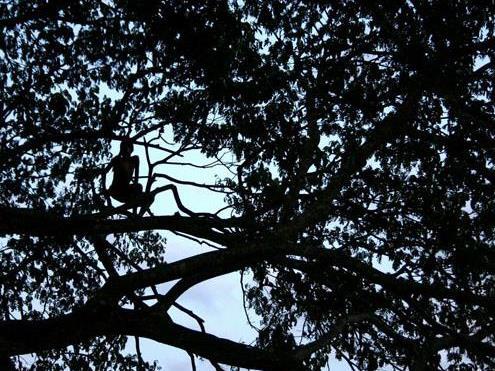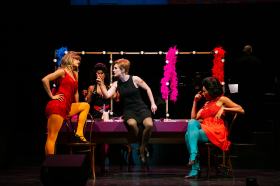Image: Sydney Festival
Recitals accompanied by video art have been en vogue in recent years and Sydney Festival hasn’t failed to capitalise on the trend. Over two nights in Town Hall, Darkness and Light combined the works of Belgian organist and composer Bernard Foccroulle and videographer Lynette Wallworth as they explored darkness and light as representations of life’s ebb and flow.
The evening opened with images of darkness depicted on dual screens over the organ. Images such as the earth in orbit and bush fires were matched with Toshio Hosokawa’s Cloudscape in a pairing which evoked thoughts of The Big Bang. This was followed by recitals in a similar vein, including Bernard Foccroulle’s Kolorierte Floten (Coloured Flutes) and Tierce en Taille by Nicolas De Grigny.
The imagery on screen was crisp and well-edited, depicting harsh scenes from the Australian landscape. Moving into daylight scenes, several song titles reflected the video content, particularly the two pieces from Messe De La Pentecote (Olivier Messiaen): Communion- Les Oiseaux et les sources (The Birds and the Springs) and Sortie- Le Vent De L’ Esprit (The Wind of The Spirit). The performance ended on a high note, with a stirring version of Dietrich Buxtehude’s Passacaglia in D Minor paired with imagery of a deserted road at dusk.
Sydney Town Hall is always an enjoyable venue and it’s a privilege to still hear the world’s only 64 foot organ in operation with such marvellous acoustics. Foccroulle and Wallworth are both highly talented artists and alone, their offerings were flawless.
Unfortunately, together, their work was mostly poorly matched. The music was loud, baroque and 20th century organ composition; the film was a gently moving series of geometric images throughout Australia. While it began as a compelling mixture, there was much shuffling in seats after some time.
Foccroulle’s chosen score had an apocalyptic feel throughout, so much so that when the deserted road video screened at the finale, one half expected Bradley John Murdoch to drive down in a ute. Darkness and Light was a polarising show which may be indicative of a trend that has had its day.
Rating: 3 out of 5 stars
Darkness and Light
Sydney Town Hall
9 – 10 January 2015
Organ: Bernard Foccroulle
Video: Lynette Wallsworth
Sydney Festival 2015
www.sydneyfestival.com.au
8-26 January






